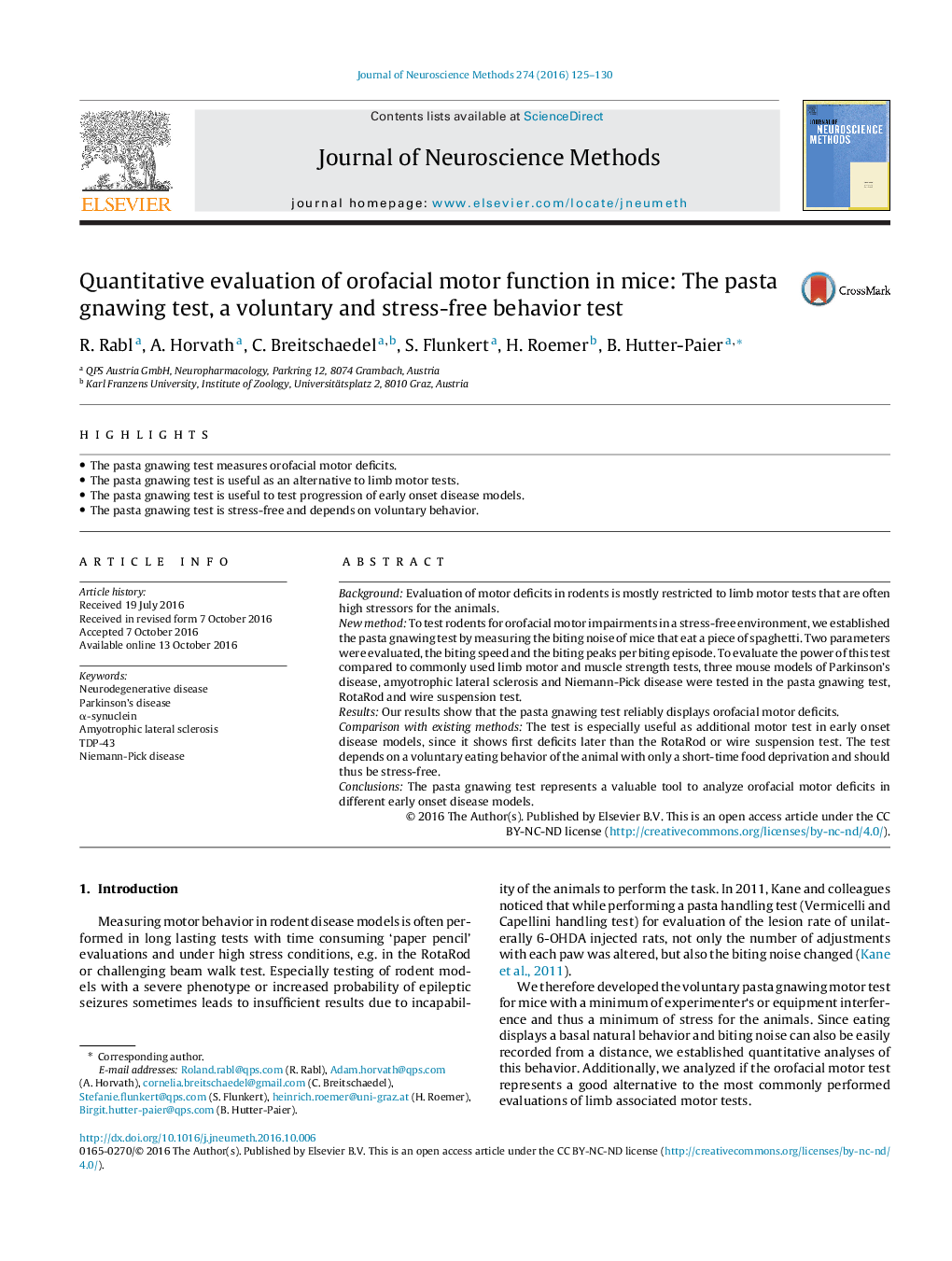| کد مقاله | کد نشریه | سال انتشار | مقاله انگلیسی | نسخه تمام متن |
|---|---|---|---|---|
| 6267539 | 1614595 | 2016 | 6 صفحه PDF | دانلود رایگان |
- The pasta gnawing test measures orofacial motor deficits.
- The pasta gnawing test is useful as an alternative to limb motor tests.
- The pasta gnawing test is useful to test progression of early onset disease models.
- The pasta gnawing test is stress-free and depends on voluntary behavior.
BackgroundEvaluation of motor deficits in rodents is mostly restricted to limb motor tests that are often high stressors for the animals.New methodTo test rodents for orofacial motor impairments in a stress-free environment, we established the pasta gnawing test by measuring the biting noise of mice that eat a piece of spaghetti. Two parameters were evaluated, the biting speed and the biting peaks per biting episode. To evaluate the power of this test compared to commonly used limb motor and muscle strength tests, three mouse models of Parkinson's disease, amyotrophic lateral sclerosis and Niemann-Pick disease were tested in the pasta gnawing test, RotaRod and wire suspension test.ResultsOur results show that the pasta gnawing test reliably displays orofacial motor deficits.Comparison with existing methodsThe test is especially useful as additional motor test in early onset disease models, since it shows first deficits later than the RotaRod or wire suspension test. The test depends on a voluntary eating behavior of the animal with only a short-time food deprivation and should thus be stress-free.ConclusionsThe pasta gnawing test represents a valuable tool to analyze orofacial motor deficits in different early onset disease models.
Journal: Journal of Neuroscience Methods - Volume 274, 1 December 2016, Pages 125-130
